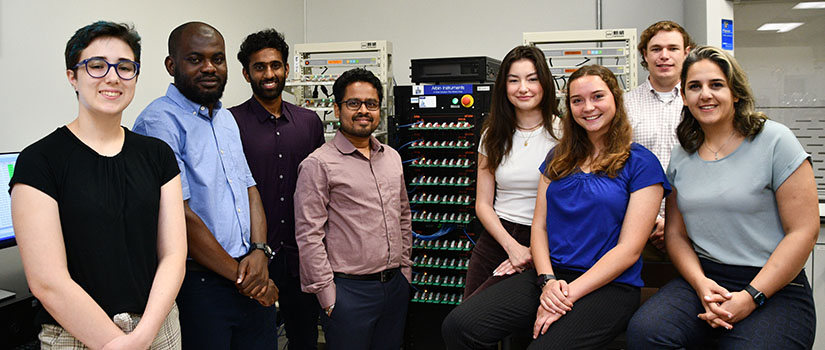Researchers at Worcester Polytechnic Institute (WPI) received a nearly $2 million grant from the U.S. Department of Energy (DOE) to create renewable fuel from sewage sludge, a byproduct of wastewater treatment that creates greenhouse gases and water pollution when dumped into landfills.

Researchers at Worcester Polytechnic Institute (WPI) received a nearly $2 million grant from the U.S. Department of Energy (DOE) to create renewable fuel from sewage sludge, a byproduct of wastewater treatment that creates greenhouse gases and water pollution when dumped into landfills. With the U.S. EPA reporting that Americans alone are putting more than 2 billion pounds of sewage sludge into landfills every year, researchers see an opportunity to keep much of that sludge out of landfills and use it to create energy, power the wastewater treatment process, and potentially supplement municipalities’ power grids.
Michael Timko, associate professor of chemical engineering and principal investigator on the three-year grant, is leading a team to develop an on-site operation that uses hydrothermal processes, high temperatures and pressure, and inexpensive catalysts to turn sewage sludge – and the energy and carbon contained in it – into natural gas.
Since the the DOE reports that the energy in wastewater entering treatment facilities is five times greater than the energy needed to treat it, recovering that trapped energy on-site will enable treatment plants to replace or supplement purchased energy sources. In addition, nitrates and phosphates extracted during the new process can be used in agriculture.
Over the last three years, Timko has garnered more than $5 million for related research focused on lessening dependence on fossil fuels, fighting climate change and creating renewable energy.
“We’re taking something that is a huge energy consumer and turning it into an energy producer,” Timko said of the new project. “And at the same time, we’re taking a problematic waste and turning it into something useful and valuable. Making wastewater treatment an energy-producing process is a win on multiple levels. And if we can keep this continuous flow of waste from going into landfills, that’s just a huge win.”
The DOE is invested in increasing wastewater treatment facilities’ energy efficiency— ultimately making them energy neutral—and environmental performance. Across the U.S., municipal wastewater treatment plants are estimated to consume more than 30 terawatt hours per year of electricity, which equals about $2 billion in annual electric costs. Electricity alone can constitute 25% to 40% of a wastewater treatment plant’s annual operating budget and make up a significant portion of a given municipality’s total energy bill, according to the DOE. As the population grows, these bills will rise along with it.
Bio-oil in acetone from the hydrothermal liquefaction of sewage sludge. Courtesy: Worcester Polytechnic Institute (WPI)[/caption]
“Turning a waste material like sludge into a valuable resource has so many environmental benefits, from reducing greenhouse gas emissions to reducing water pollution and soil contamination,” said Walker. “If successful on a large scale, this new approach could dramatically increase the recovery of energy at wastewater treatment facilities all over the world and bring us a lot closer to net energy neutral wastewater treatment.”
Researchers at Pacific Northwest National Laboratory, one of the DOE’s national laboratories, are collaborators on the project, running a pilot test of the technologies being developed. Also collaborating are researchers at Syracuse University, who are working on developing the gasification reactor and catalyst; and researchers at the American Institute of Chemical Engineers, who will work on commercialization of the overall process.
– Edited by Chris Vavra, web content manager, Control Engineering, CFE Media and Technology, [email protected].



